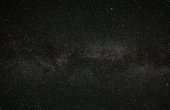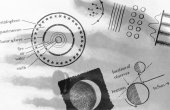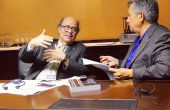Freeman Dyson and Me
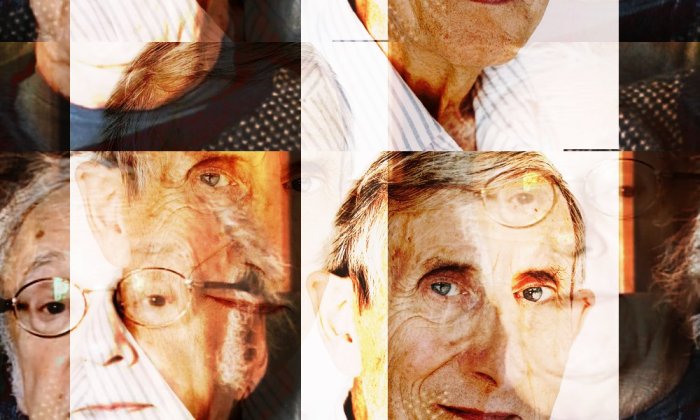
In the essay that follows, theoretical physicist and former New Yorker staff writer Jeremy Bernstein recounts his half-century friendship with Freeman Dyson, key moments of which were conveyed via letter. Much like Dyson’s remarkable letters home to his parents and sister, his correspondence with Bernstein unfolded in a kind of quantum superposition: deep and surprising insights about mathematical theorems and physical theories sprinkled amid casually wise observations about obscure novels, faraway places, academic politics, and family life. In turn, Bernstein served as “midwife,” encouraging Dyson’s early forays as an essayist and connecting him with magazine editors.
This essay is reproduced with permission from World Scientific, who in 2018 published Jeremy Bernstein’s book “A Bouquet of Dyson and Other Reflections on Science and Scientists,” in which this essay first appeared. The essay also appears in “Well, Doc, You’re In: Freeman Dyson’s Journey through the Universe” (MIT Press, 2022), a collection of writings by leading scientists, historians, and science journalists on the life and work of Freeman Dyson.
The first time I met Freeman Dyson — at least in a manner of speaking — was in fall 1953. He had come to Harvard to give a series in the Morris Loeb and David M. Lee Lectures in Physics. Some of them were on a subject on which I was then doing my PhD thesis — the theory of mesons. My thesis adviser, the late Abraham Klein, suggested that we have a private talk with Dyson. I was very pleased with this idea because Dyson was already a hero of mine for his monumental work on quantum electrodynamics. His first lecture at Harvard had been about something else. He had been introduced by our local genius Julian Schwinger as “mister” Dyson, which I took to be one of those professorial affectations. But I later learned that it was true. While he has been awarded honorary degrees from over 20 institutions, Dyson never did bother to get his PhD.
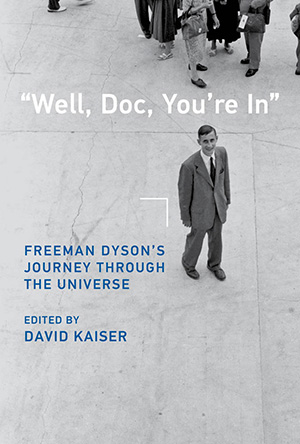
He had been assigned a temporary office in the physics building, which we had no trouble finding. The office had a couch on which Dyson was lying, seemingly asleep. This did not bother Klein, who began to drone on and on, oblivious to the fact that Dyson was lying there with his eyes closed. After some time, it registered on Klein that there was no response, so we left. I did not see Dyson for another four years, by which time I had gone as a visiting member to the Institute for Advanced Study, at which he was a professor. He occasionally had lunch with us at the Institute cafeteria. He rarely said much but seemed to be amused by the general patter. I never would have gotten to know him except by accident: We had taken the same late-night train from New York to Princeton, so we began to talk. As I recall, I had my car at the station, and I drove him home. He invited me in for a drink and wanted to know how, and why, I had gotten into physics.
Toute proportion gardée, our routes had been similar: mathematics. There was an important difference: He was a genius. It may have been on that occasion that I asked him what his earliest mathematical memories were. He said that when he was still young enough for being “put down for naps,” he began adding up 1 + 1/2 + 1/4 + 1/8 + 1/16 … and realized that the sum was approaching 2. In short he had grasped the idea of a convergent infinite series. At the time of our meeting, he was separated from his wife. His children, George and Esther, were for the moment with her, so he was living in this big house alone. We talked about that.
While he has been awarded honorary degrees from over 20 institutions, Dyson never did bother to get his PhD.
During the year, I saw him talk a few times. He was clearly very busy. One of the things he did was to read and gloss over papers in Russian journals that were not yet translated. Once when I went into his office, he was relaxing in a canvas beach chair and reading the Bible in Russian. That summer he went off to the General Atomic division of the large firm General Dynamics in La Jolla to consult, and I went to the RAND Corporation in Santa Monica to do likewise. It was not a success.
Although RAND had the superficial atmosphere of a college campus, it was devoted to the strategy of nuclear war. The Falstaffian figure of Herman Kahn was assuring everyone that a few megadeaths in an exchange with the Soviets would be quite tolerable. I recall once going into a room with the other RAND physicists where a seismograph had been set up. We watched while it registered the quavers from a hydrogen bomb test in the Pacific. I found the whole atmosphere very depressing. In the meanwhile, the secretary we had in our building at the Institute was forwarding mail along with the gossip. I learned that Dyson was designing a spaceship, that he had been to a bullfight, and had been bitten by a dog. I wrote a note to him saying that if any of these three things were true, he was having a better time than I was. Much to my surprise, a day or so later the phone rang, and it was Dyson inviting me to come down to La Jolla. I jumped at the chance.
It turned out that all three of these things were true, and the spaceship, which was supposed to be powered by the exploding atomic bombs, was called the “Orion.” It is not an accident that this was the name of a spaceship in Kubrick’s “2001.” There was more. He had been stopped by the police for walking. They had some reason: he had broken his glasses and was wearing scuba diving goggles to assist his vision. When asked for identification, he produced a card with his picture and fingerprints on it from the Department of Defense. It said that the bearer of this card was entitled to receive top-secret information. One can only wonder what went through the police officer’s mind.
One of the considerations in designing the Orion was how much radiation would propagate through the superheated material following an explosion — the opacity. Dyson had proven a beautiful theorem that showed that quantum mechanics imposed a maximum. My job was to test this with numerical computations, which I did, on a now antique electromechanical calculator. Some 50 years later, we published this work. In the meantime, a great deal had happened in his life, much of which began that summer.
When I arrived in La Jolla, the children were still with their mother. She and Freeman were divorcing, and the children were to come and live with him. When they arrived, they were accompanied by an attractive German woman named Imme Jung, who was to act as their governess, allowing Freeman the opportunity to go to work. He was totally preoccupied with the spaceship and wrote a stream of reports on everything from the functioning of springs to how to shape the explosive force from an atomic bomb. As the summer evolved, two complications developed. As Imme was scheduled to return to Germany, a second German governess named Margot had arrived as her replacement. But in the meanwhile, Freeman and Imme had fallen in love, their happiness evident to everyone. The four of us took to going out together, on one occasion driving to Baja California and on another to visit some people I knew who had a ranch near Santa Barbara. By the end of the summer, Freeman and Imme had decided to get married. He was going to stay in La Jolla, and I was going to return to Princeton.
We began to write letters. I saved his, all written in an almost calligraphic script. The first one is dated 25 November 1958. And the last one I have is dated 26 December 1990. We then stopped communicating by letter and email took over. I have dozens of emails from Freeman. Some of them are very interesting, but they lack the human touch of an actual letter. Can you imagine Lord Chesterfield’s “Tweets to His Son”? Some of the letters are technical. One of them, dated 21 August 1981, begins, “Sorry my friend you goofed.” I had written a book review for the New Yorker that had dealt with maps and had carelessly described the Mercator projection — which projects the spherical Earth onto the plane of a map — as “linear.” Dyson writes, “Mercator’s is not a linear projection but a logarithmic one. So far as I know there is no geometric model for it. Precisely that was the originality of Mercator’s idea.” He then goes on to provide a mathematical proof, and what is typical, he goes on to say, “The really extraordinary thing about Mercator’s projection is that it gives useful maps up to very high latitudes. This is possible only because the latitude scale is logarithmic.” He shows it works well, up to a latitude of 85 degrees, and remarks that the “map includes more than 99% of the globe. No geometric projection could possibly do as well as this,” and then adds, “It is a pity that schools do not teach geography anymore.”
He was of course right, and my error also slipped by the New Yorker’s vaunted checkers. The interested reader can find the details on the web.
Many of the letters are anecdotal. Typical is the first one dated 28 November 1958. It was written just after Freeman and Imme had gotten married. It was addressed to “Jerry and Jane.” Until I began writing for the New Yorker, I was always known as “Jerry” instead of my real name “Jeremy.” “Jane” refers to Jane Kane, who was the secretary who had kept me informed about Freeman’s activities while I was at RAND:
Dear Jerry and Jane,
Your telegram made us very happy when it arrived on the wedding morning.
The wedding was a merry occasion. The judge took us in a break between two traffic violation cases and the children found this highly entertaining. We sat in the courtroom with the flowers and the 3 children [two of his own and one of his ex-wife’s] and our witnesses … while the lawyers cross-examined some poor fellow who had been crashed into by a car-load of drunk Mexicans. Finally, the jury filed in, pronounced the verdict of “Guilty,” and filed out, the judge heaved a sigh of relief and married us then and there.
We flew to San Francisco for a 2-day honeymoon. This was only the hors d’oeuvre. The real honeymoon shall take us to Mexico City in December. San Francisco was as beautiful as ever.
The most anxious moment of this week was 2 nights before the wedding when Imme and I went to a movie. Imme was trying on her ring and dropped it on the floor into a ventilator. Like the perfect gentleman I am, I crawled down outside the building and along about 100 feet of pitch-black and filthy and extremely narrow passages while Imme hammered on the floor above to guide me. I actually found the ring and got out alive, much to my surprise. I believe in the Middle Ages they had similar ordeals for young men who wanted to get married.
It is worth noting that in his Cambridge University days, Freeman had done some night climbing of buildings on the campus — an old tradition.
On 6 February 1959, I received a letter from Freeman that contained the following paragraphs:
Last Sunday the Mexican Federal Police raided the Club Deportivo Panamericana [a place in Baja California we had visited] collected 63 Americans, confiscated all their cash, and left them to languish in the Tijuana town jail until they could raise the $1600 bail each. The San Diego paper has been keeping this outrage on page 1 all the week. I whistle softly to myself when I think of Imme and Margot sharing a cell on one side of the corridor, you and I on the other. There, but for the grace of God.
By the way, Margot left us last week and found herself a job with a family in La Jolla who have 5 children under 10. So now she is finding out what real Americans are like.
Freeman and Imme had four daughters. On September 1970, Freeman wrote to me about an exchange he had with his then seven-year-old daughter Mia (then Miriam). The late Arthur Wightman mentioned in it was a professor of physics at Princeton and was noted for his work on the mathematics of the quantum theory of fields. Freeman writes,
This morning I had an illuminating dialog with my 7-year-old daughter Miriam. At lunch yesterday Arthur Wightman scribbled some equations on a paper napkin and I took it home. So the following conversation occurred.
Miriam. What is this?
Me. It’s a problem which Wightman gave me.
Miriam. Is it hard?
Me. It was too hard for Wightman so probably it is too hard for me.
Miriam. But Daddy, you know that negroes are just as smart as white people.
In 1986, I published an article in the New Yorker about climbing Popocatapetl in Mexico. On 18 December, Freeman wrote,
We have been enjoying your “Breaking in at the New Yorker” and even more your Popocatapetl. We have vivid memories of our honeymoon in May 1959 when Imme, then 5 months pregnant, drove us in a dilapidated rental car up from Amecameca to the shoulder between Popo and Inxti. [Iztaccihuatl is the slightly lower twin volcano.] In those days the road was unpaved and there were no climbers. Not even any tourists. The sole human being up on the pass was a young Indian girl collecting bundles of tall grass reeds, presumably to be taken down to the village and woven into hats and baskets. Imme spoke to the woman in Spanish but she did not answer. We wondered how the hell she got up there, and how the hell she would get down again. Probably by walking both ways. And we were feeling quite proud of our bravery getting up and down by car. Leaving her alone up there, when we drove down in the evening, we did not feel like heroes anymore.
What I liked about your story was the brevity of the climb itself. In the story, as in real life, it is the preparations that are memorable.
Happy New Year!
Imme and Freeman
Freeman was away from the Institute during some of spring 1958. He was working on the spaceship. So he missed the mystery. Threatening notices were being placed on the doors of the members. One might have dismissed this as a joke, except that Robert Oppenheimer, our director, had lost his clearance not too long before and had been accused of being a Communist and possibly a spy. After Freeman returned, I told him about what had happened. His first response was to accuse me. I said that this was not possible, because the handwriting on the notes was too good. Then he said, without explanation, “Gaudy night.”
It was only a few years later that I understood the reference. In 1935, Dorothy L. Sayers published a Lord Peter Wimsey crime novel with that title. It deals with the kind of note leaving at Oxford, but of course there is murder involved. Once I saw the connection, I read the novel but was surprised by its casual anti-Semitism. A young man is asked if he is related to Lord Peter. “Why of course,” said the young man sitting up on his heels. “He’s my uncle; and a dashed more accommodating than the Jewish kind,” he added, as though struck by a melancholy association of ideas. No explanation was offered for this bizarre association, which seems in your face (defiantly confrontational; blatantly aggressive or provocative). I wrote a note to Freeman from Oxford where I was spending a year, pointing this out. On 3 February 1972 he replied:
Dear Jerry
Thanks for your note about Gaudy Night. I had totally forgotten that. I have been hoping some time to see “Le Chagrin et la Pitie” but it didn’t come here yet. I am now reading “The Double-Cross System.” It is the best of the WW2 spy books. The Israelis now have a superb opportunity to make use of its technique to deal the Soviet intelligence apparatus a mortal blow. I hope they are making the most of it.
Whatever it was, the intelligence apparatus seems to have survived. The mystery of the notes at the Institute was solved, when the police, and possibly the FBI, began interviewing people. The young son of one of my physics colleagues confessed. He said it had been a “joke.”
The next rather long letter requires some explanation. It is dated 15 December 1971. The first part refers to the fact that by 1971, I had made a few trekking trips to Nepal and had seen most of the great mountains there. In 1969, I had driven to Pakistan and had seen many of the mountains there. The rest of the letter refers to the fact that I was in the midst of writing a profile of Albert Einstein, which eventually appeared in the New Yorker. I had mentioned that I was doing this to Freeman.
Like everyone who writes about Einstein, I began my research with his “Autobiographical Notes,” first published in 1949. In them, he tells us that at age 16, he had hit on a “paradox” that 10 years later led him to the theory of relativity. He imagined that he could move as fast as a light wave. He could then attach himself to a crest or trough, and the wave would no longer appear wave-like. Hence he would have a way of determining his speed in an absolute sense. This he felt was impossible, so something had to be wrong. It turns out that relativity forbids motions of a massive object at the speed of light. Einstein does not put things quite this way, but that is the idea. What Dyson pointed out to me was that at age 15, Einstein actually wrote a little paper about this and that in this little paper there was no hint of relativity at all. Here is the letter:
Dear Jeremy
Thank you for letting us see the Einstein chapter which Helen gave us yesterday. [This is a reference to Helen Dukas, who had been Einstein’s secretary in Germany and emigrated with him. She, along with Einstein’s sister, shared his house in Princeton.] I returned it to you, but I would be glad to have a copy to keep when you have one available. Also thanks for the Nanga Parbat picture which is superb. [Nanga Parbat is a 26,600-foot tall mountain in Pakistan.] I have three Nanga Parbat books, by Dyhrenfurth, Herrligkoffer and Buhl [who first climbed the mountain] and the whole thing has for me a mythical quality. The fact that you have looked down [from a plane] on that Olympian summit plateau makes you almost a mythological character too.
To return to Einstein. Recently I read the article “Über die Untersuchung des Aetherzustundes im magnetischen felde” [“On the investigation of the aether state in a magnetic field”] which Einstein wrote at the age of 15 and I wonder if you have read it. It appeared finally in “Physikalische Blätter” Vol. 27, 385 (1971). I found it extremely illuminating. In fact, it has very much the same value for the understanding of Einstein’s development as the decipherment of Linear B had for the understanding of Greek history. In both cases, we were suddenly and unexpectedly confronted with a written document from a period far earlier than anyone believed possible. In both cases, the publication of the documents was attended with enormous complications, with Sir Arthur Evans and Otto Nathan playing possibly analogous roles.
My own reaction to Linear B and to the Einstein article went through the same three stages. First, with great enthusiasm and hope that some great mystery would be revealed.
Second, deep disappointment that the documents turned out to be so completely ordinary. Thirdly, understanding that precisely ordinariness of the documents was the mystery, making the miracles that came later even more miraculous.
When one looks in detail at the Einstein article, a number of things become immediately clear. His main concern was to find some experimental way of checking whether the mechanical modes of the aether were true. He was obviously impressed by the elegance of Hertz’s experiments and the contrast between the elegance of the experiments and the clumsiness of the mechanical models. But he never explicitly questions the mechanical picture.
The most remarkable thing about the article is that it contains not the slightest hint of relativity. Not a hint of the famous question of what you see when you travel along with a light-wave. But it does contain two things that were decisive for the later history. (1) For Einstein the electromagnetic field came first, before he had been exposed to the whole imposing apparatus of Newtonian mechanics. So when he found out that Maxwell and Newton were in contradiction it was natural for him to hang on to Maxwell and discard Newton. The orthodox nineteenth-century education had of course precisely the opposite emphasis. (2) Einstein at 15 was not yet thinking in terms of a Gedanken experiment. He was discussing what he thought of as a real experiment. But the kind of experiment he proposed would have naturally led him to consider others which would be genuinely Gedanken in character. The style of his thinking is already going in the direction which would lead him to 1905.
I hope you will in your account of Einstein give some weight to the 1895 article. I think it is important for putting his work in perspective, just as Linear B has been for Greek history.
For the last two months I have been in the middle of great personal dramas concerning Einstein. How Einstein would laugh if he could see the learned men squabbling over his relics. I would laugh too except that the drama is a tragic one. Meanwhile I have been reading over again Einstein’s great papers, the 1905 and the 1915 and finding them as fresh and wonderful as ever.
I hope you have a splendid time in Oxford. I probably won’t see you before you go. But let’s keep in touch.
Yours ever,
Freeman
The standard view for the propagation of light in the 19th and early 20th centuries was that it propagated in a mechanical medium, which was known as “ether,” just as sound waves propagate in a medium. What Freeman was noting was that at age 15, Einstein accepted this and even proposed an experiment to detect the ether. In this paper, there was no hint of what he would later write in his relativity paper: “The introduction of a ‘luminiferous ether’ will prove to be superfluous.” The “squabble” Freeman refers to had to do with the trustees of the Einstein estate blocking the publication of his letters. I had such an encounter with one of them, Otto Nathan. He held up the publication of my New Yorker profile of Einstein by making all sorts of demands before he would allow us to use quotations. At one point, he told me that the estate had the rights to the formula E = mc2. I finally had to pay a good deal for these rights. Soon after the first part of the profile had been published, Nathan called me to complain that he had not been credited.
“So I am not too old after all, and still have something to do here. As you say, it is nice to know that given the choice there really is no choice.”
Here is a letter dated 14 October 1968, just after I had taken a job at the Stevens Institute of Technology:
Dear Jerry
I was considerably moved by your letter. I had a very good feeling about Stevens when I went there for a day last winter, and I hoped you would see it the same way. It seems you did.… I knew you were going through a rough time. Everything in your letter increases my respect for Stevens and for you.
The last year was also a restless one for me.… I did this year teaching at Yeshiva and I was seriously considering taking a permanent position there. I had come to one of those middle-age crises, feeling maybe I am too old to produce ideas anymore and I ought to settle down to a teaching job before it is too obvious.
Anyhow I finished the year at Yeshiva and came back here. And I have been in the full tide of happiness these last days, proving that one-dimensional Ising models with an interaction going like distance−α have a phase transition [as conjectured by Mark Kac] when 1 < α < 2. Now it is midnight and I just wrote the last words of the proof in a strangely luminous state of mind, as Gibbon describes in his autobiography how he wrote the last words of the “Decline and Fall.”
So I am not too old after all, and still have something to do here. As you say, it is nice to know that given the choice there really is no choice.
I would much enjoy another visit to Stevens now you are there. The Nepal pictures are still to be seen, 2001 to be discussed, and much else. Your piece about nuclear weapons is good. It is difficult to write long sentences with clarity, but you did.
Love from us all,
Freeman
The Ising model is a mathematical model that describes how certain solids can become magnetic at critical temperatures. The simplest such model would be a string of tiny magnets that can point up or down. If at some critical temperature all the tiny magnets line up, then the string becomes magnetic. What Freeman showed was that, given the conditions of his proof, there must be such a critical temperature for a one-dimensional string. It was a tour de force bit of mathematics.
This final letter is dated 6 May 1969 and was written from the faculty club of the University of California at Santa Barbara:
Dear Jeremy
This evening Shawn [William Shawn, the editor of the New Yorker] telephoned and said he will print my stuff. Naturally I was pleased. I write now to thank you for your services as a midwife. Also thank you for the invitation to talk at Stevens without which this would never have happened.
I promised to send Arthur Clarke a copy of the lecture on space travel, but I don’t have his address. If you happen to have it, please send it on a postcard.
By a strange coincidence, so soon after writing this piece for the New Yorker, I had again a close encounter with violent death. It came like the Hiroshima bomb on a peaceful sunny day. I was woken by a shattering explosion, followed by moans and cries for help. I was too scared and stunned to run down immediately. While I hesitated a man was burning to death. By the time I came down he had already dragged himself into the children’s pool below my window and put out the flames. If I had come down sooner, I might well have been able to save his life. He died in hospital two days later.
The bomb was presumably intended only to burn down the Faculty Club where I am staying. Unfortunately, the caretaker found it and it blew up in his hands.
This campus is now very quiet, trying to digest what has happened. The blood and ashes around the pool have been washed away and the children are again splashing in it. And I am once again a survivor with a bad conscience.
All the best,
Freeman
To this day, the murder of the custodian Dover O. Sharp remains unsolved.
Jeremy Bernstein completed his PhD in physics at Harvard University in 1955, studying under Nobel laureate Julian Schwinger. He served on the faculty at New York University and the Stevens Institute of Technology and has held appointments at Brookhaven National Laboratory, CERN, Oxford, the University of Islamabad, and the Ecole Polytechnique. A prolific author, Bernstein was a staff writer at the New Yorker magazine between 1961 and 1995 and has published 29 books.

